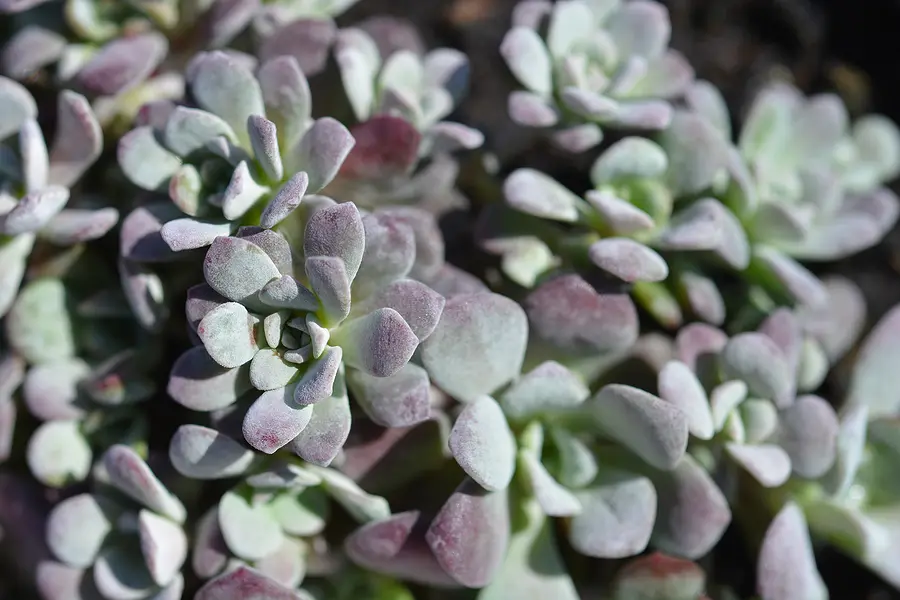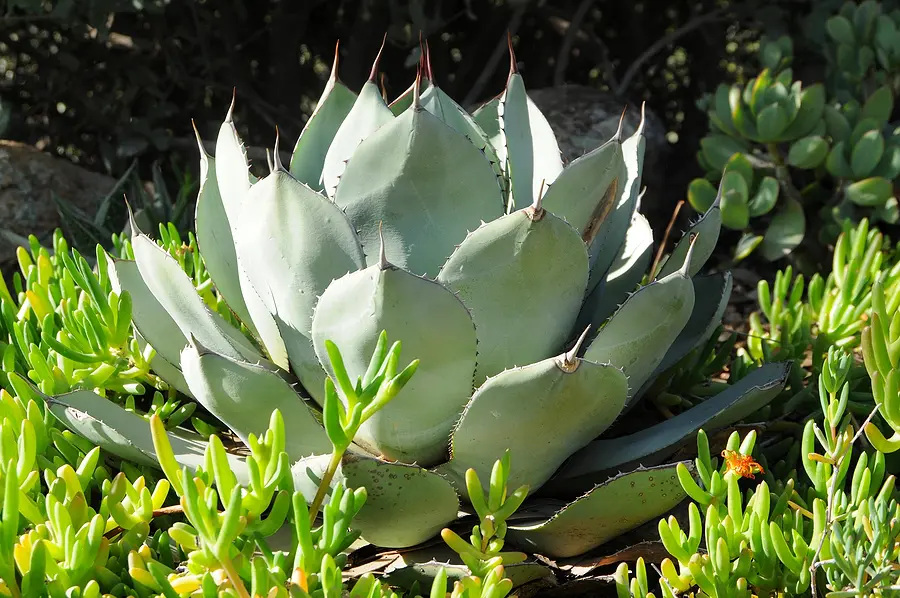What are the Top Five Xeriscape Landscaping Plants?
Xeriscaping your yard will lower the amount of water you’ll use on your lawn and landscape space, as well as reduce (if not eliminate) the chemicals (pesticides, fungicides, herbicides, fertilizers etc.) required to keep them looking healthy.
A major aspect of xeriscaping is creating your garden or yard with drought-resistant, water-wise plants, and we’ve got some great recommendations. Check our list of some of the very best plants for xeriscaping.
Our top five favorite plants for xeriscaping
- Shore juniper (Juniperus conferta)
- Broadleaf stonecrop (Sedum spathulifolium)
- Germander sage (Salvia chamaedryoides)
- Whale’s tongue agave (Agave ovatifolia)
- Big sagebrush (Artemisia tridentata)
Homeowners use nearly 50 percent of drinking water for lawn and garden maintenance. One type of design commonly used is xeriscape, which saves water by up to 60%.
It accomplishes this by using drought-tolerant, and other similar materials that require little to no water — only what the local environment offers.
When you xeriscape your yard, however, it is not just about the water-wise plant and vegetation choices such as these plants listed here. It also involves replacing grass with materials like mulch, rocks, soil and other hardscapes.
“It is very possible to fill your entire front and back yard with [xeriscape] plants and materials that are low maintenance and reduce the need for watering, such as native grasses, wildflowers, mulch, decorative rocks or tile.” So without further ado, now that the season for planting succulents is here, let’s begin with all the varieties of plants that can give you a beautiful — and diverse — display of textures and colors while conserving water in their own silly way and giving back to nature in countless others.
Our 5 most loved plants for xeriscaping
1. Shore juniper (Juniperus conferta)
While your home and garden reside in the United States, growing shore juniper lets you put a bit of the European and Asian continents in your landscape.
This evergreen tree is from Sakhalin Island in Russia and the shores of Japan. Winter changes the blue-green needles to a striking bronze-green to yellow greenish tone.
This floor covering has a fruit cone that is berry-like; the dark fruit turns bluish-black to silver coated.
If you want to plant something for erosion control, shore juniper is the perennial for you. It is also drought-resistant, deer-resistant and air pollution-resistant. Plant it on slopes and in rock gardens. It’s also a very good choice over retaining walls.
- Growth habit: Ground cover or shrub
- USDA Hardiness Zone: 6-9
- Mature size: 6-12 inches tall; 6-8 feet wide
- Duration: Perennial
- Foliage: Evergreen
- Sunlight needs: Full sun; tolerates partial shade
- Soil preferences: Well-drained sandy soil; adapts to poor soil
- Water needs: Medium
- Potential hazards: None known
2. Broadleaf stonecrop (Sedum spathulifolium)
If what you want is a water-wise ground cover with big colorful flower petals, stop right here. A beautiful yellow flowering mid-spring broadleaf stonecrop. Its evergreen foliage also adds interest to your landscape. The leaves are available in numerous colors, but are generally bluish, becoming red-purple before they are ripe.
Bees and butterflies are attracted to the broadleaf stonecrop, which is a caterpillar host plant.
This herb will be successful if you have a sloped garden. It is the native growth of the slopes and ledges. This plant covers the ground best when you buy several and space them 6 to 12 inches apart, because only a few of those you plant will grow and thrive.
- Growth habit: Herb, ground cover
- USDA Hardiness Zone: 5-9
- Mature size: 2 to 6 inches tall
- Duration: Perennial
- Foliage: Deciduous
- Sunlight needs: Full sun to partial shade
- Soil preferences: Dry, well-drained soil
- Water needs: Low
- Potential danger: All parts are toxic; low poison if ingested.
3. Germander sage (Salvia chamaedryoides)
Germander sage is a different ground cover that helps to make your xeriscape design more interesting with color, and it will also entice beneficial insects. This shrub has silvery-white leaves and bright, metallic blue flowers. Germander is native to Mexico.
The vibrant blue flowers are a magnet for hummingbirds and butterflies. This evergreen is effective for gardens visited by deer; germander sage is deer-resistant. It is also at home in wall-side borders and tiny city gardens.
- Growth habit: Shrub
- USDA Hardiness Zone: 7-11
- Mature size: 12-18 inches tall; 3-4 feet wide
- Duration: Perennial
- Foliage: Evergreen
- Sunlight needs: Full sun; tolerates partial shade
- Soil preferences: Loam, chalk, sand; well-drained soil
- Water needs: Low
Potential hazards: Most are non-toxic, though can be harmful when ingested in large amounts (so you might want to keep curious pets and little kids away just to be extra safe)
4. Whale’s tongue agave (Agave ovatifolia)
Whale’s tongue agave is a cactus native to northeastern Mexico, and it’s likely of no great surprise that the plants that are most successful in dry climates are natives of Mexico.
This plant is a succulent, which means that it stores water in its leaves, stems and roots, and requires little water to survive. It also withstands harsh winters.
Lying low to the ground and bearing full, thick layers of blue green leaves, Whale’s tongue. Wait long enough — about a decade — and you can even catch sight of the greenish-white flowers that bloom only once.
Grow whale’s tongue in city gardens and rock gardens, but keep it out of places that get foot traffic. Be careful if you have kids. Whale’s tongue is a brutality on the edges, with sharp teeth that can be dangerous to humans and pets. The leaves’ sap can also irritate the skin. Birds, for their part, have nothing to fear. They will come to your yard for this Mexican native.
- Growth habit: Cactus
- USDA Hardiness Zone: 7-11
- Mature size: 3-4 feet tall; 4-6 feet wide
- Duration: Perennial
- Foliage: Evergreen
- Sunlight needs: Full sun or partial shade
- Soil preferences: Loam, Chalk, Sandy, Rocky, and Well-drained
- Water needs: Low
Potential dangers: Not toxic, but the leaves exude a sap that can irritate the skin and may create blisters. Sharp leaves can cause injury.
5. Big sagebrush (Artemisia tridentata)
Big sagebrush is a shrubby plant that can become a tree reaching as much as 15 feet tall. It’s also known as Great Basin sagebrush and is found in the Great Basin region of the Western US.
The tiny, silvery leaves are silky and have a sweet, pungent aroma. Look close and you’ll notice the small yellow-green flowers that emerge in June and linger into November.
Slope planting is appropriate for erosion control with big sagebrush. It is also a good hedge.
- Growth rate: Moderate to fast EIFORM: Shrub or small tree
- Hardiness Zone: 4-9.
- Mature height: 3 to 15 feet
- Duration: Perennial
- Foliage: Evergreen
- Sun requirements: Full sun
- Soil requirements: DryWell-drained, rocky soil
- Water requirements: Moderate and drought-tolerant
- Potential disadvantages: They are highly flammable and not suitable when fire-resistant landscaping is a concern.
Final Thoughts
The time to act is now!
If you have been dithering on switching your Albuquerque landscaping with xeriscape landscaping, then call us at ASAP Sands Outdoor Services!
We can show you the best way to turn your yard into a xeriscape project and set a time for one of our team members to visit your home or business will happen.
